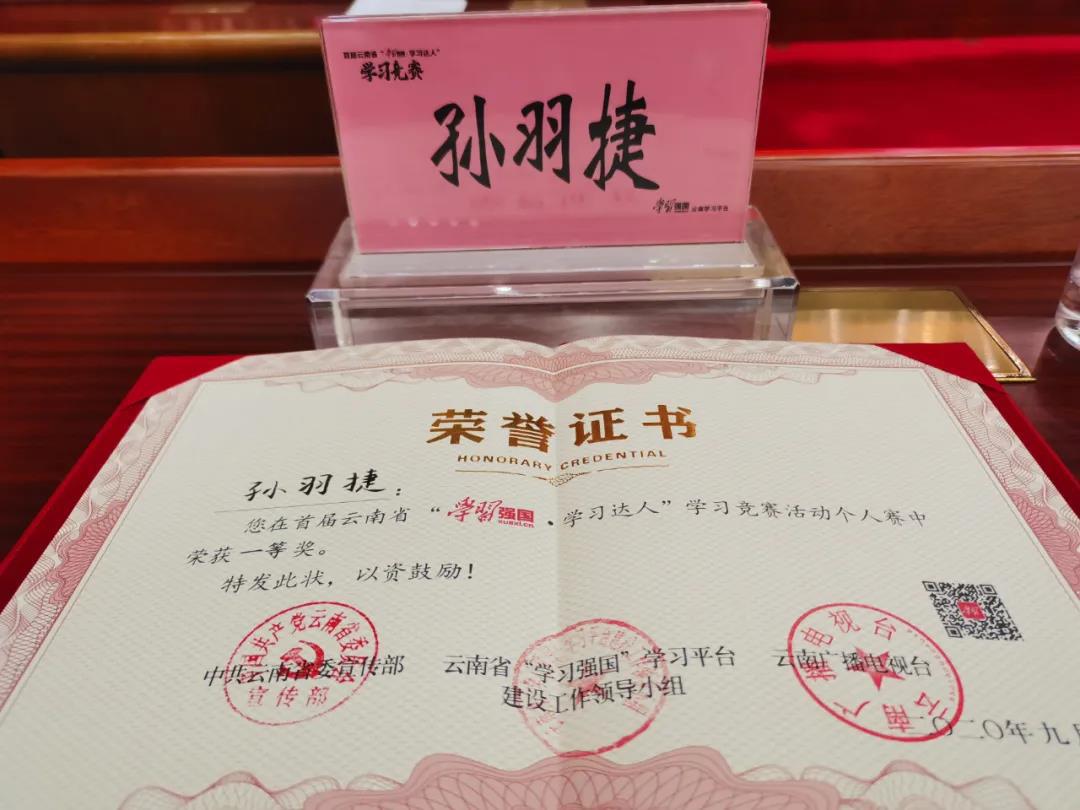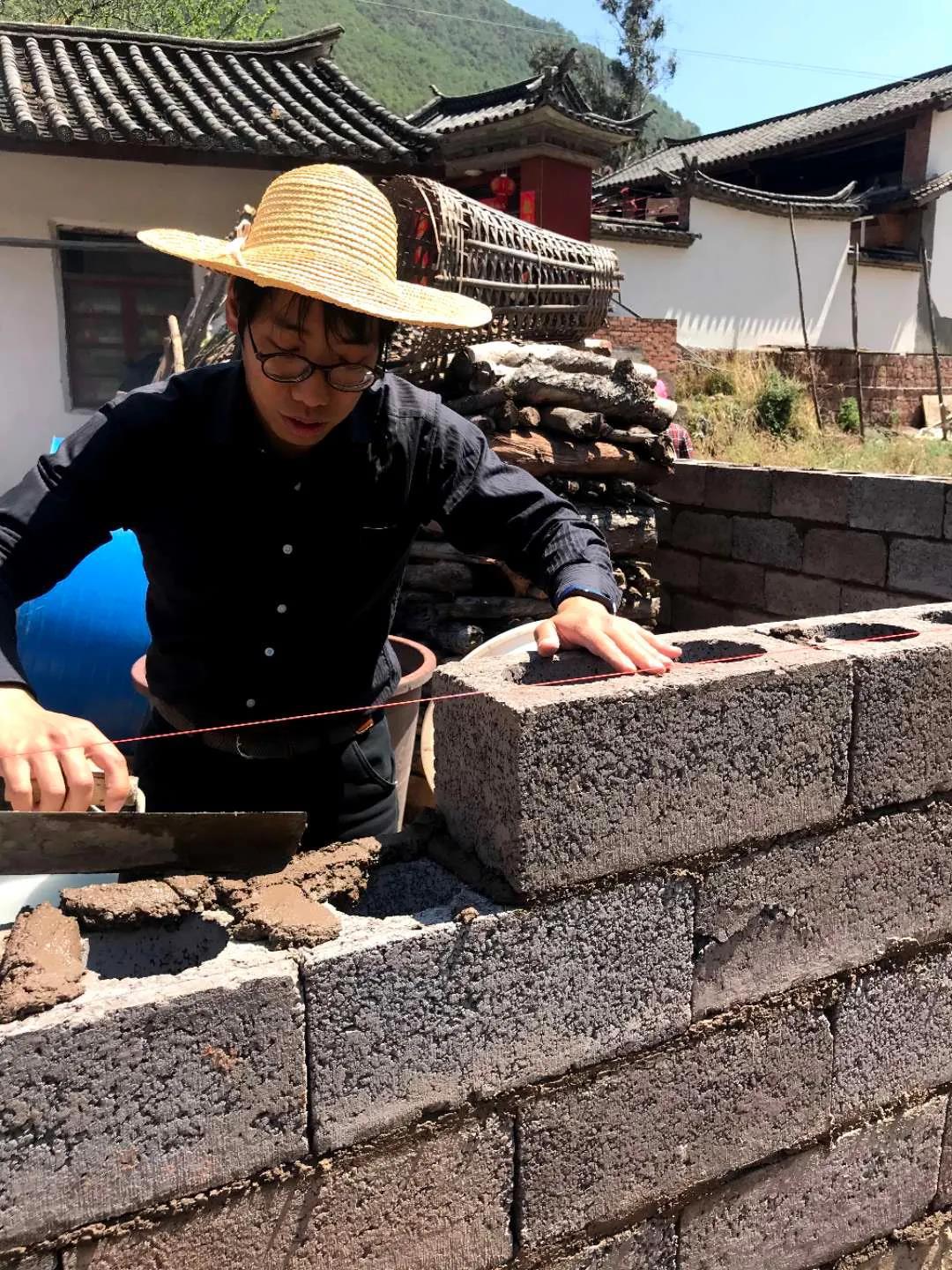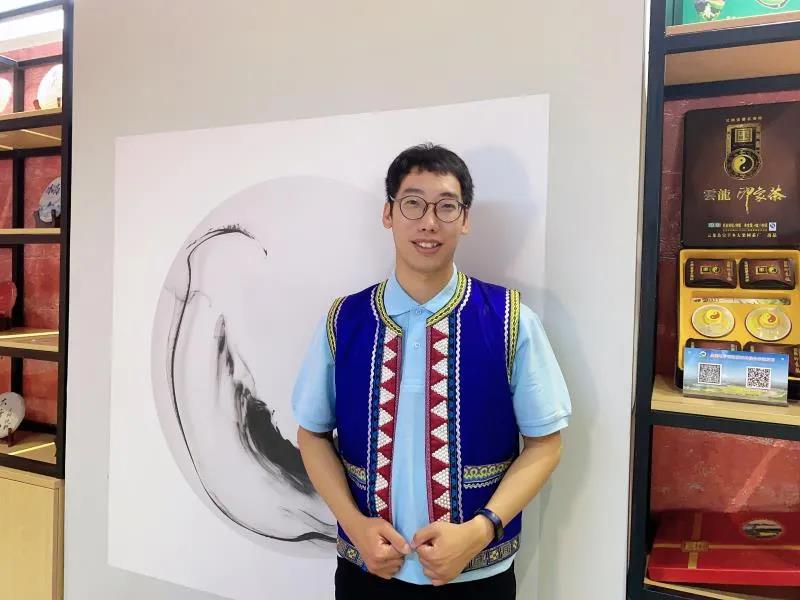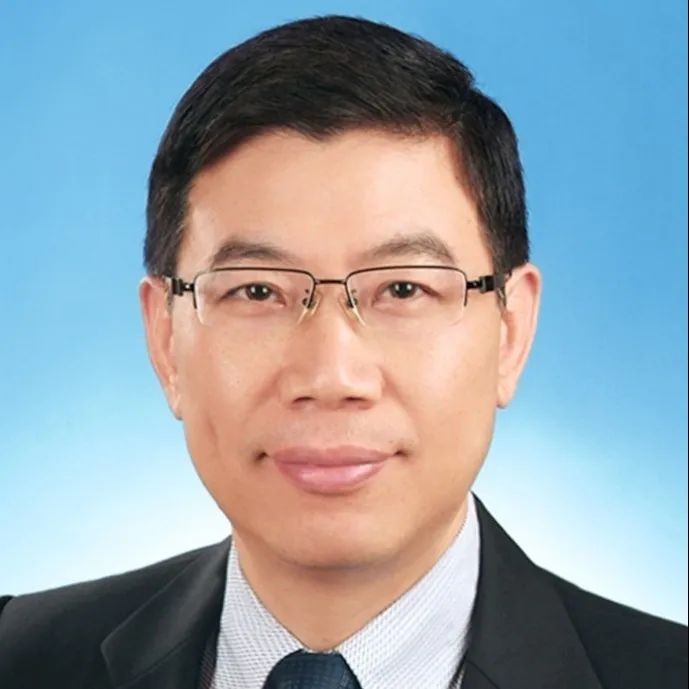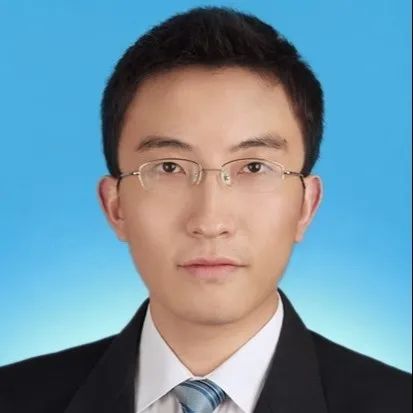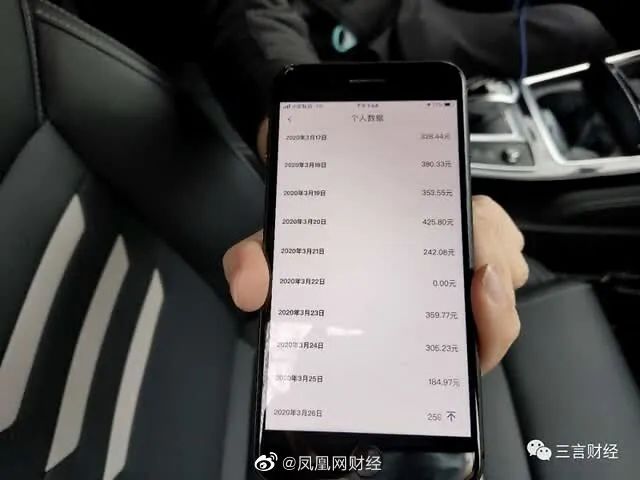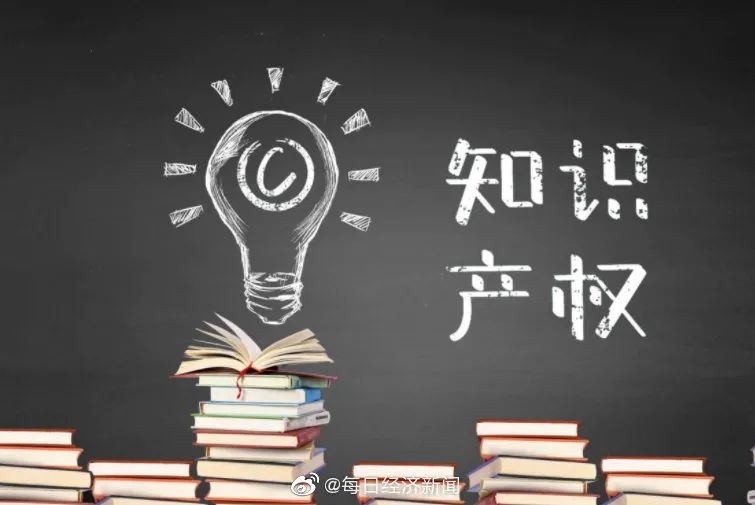# This article is a record of the 59th issue of Tiger Sniff Selection #
[Introduction to Big Coffee]
In this private conversation, Chen Hao shared a lot of his understanding of social e-commerce trends and practical dry goods. Due to the space problem, we divide the record into upper and lower parts. The first part is Chen Ying’s trend analysis of social e-commerce, and the second part is Chen Ying’s answers to specific problems in practice. In addition, Chen Ying will also attend the retail private enjoyment meeting of Tiger Sniffing FM Festival on November 25th, and share and communicate with social e-commerce peers in depth.
Chen Ying:This time I originally wanted to share some trends about the whole industry, but I came over () I found that the vast majority of people here are either founders and CEOs or investors, so I think it may not be enough to talk only about industries and trends. There are a lot of questions raised by you earlier, so I want to change the form of my sharing, put PPT aside, and make some summaries around the issues that you are more interested in first.
Today, I came to friends who do TV shopping, insurance, customers, training, education, public relations services, finance, parent-child travel, outdoor, beauty equipment, consumer brands, and self-media. I found that most people are interested in thinking about how to better integrate with the community and socialize around their specific categories.
There are a group of friends who do "offline", including offline shops, online makeup, and offline hair growth. His question is "How can I connect with the online"; There are also friends who play games, whether it is small programs, small games, game e-commerce or other games. Their problem is how to connect through the form of community.
Several problems about social e-commerce
So I think the first big problem, that is, at the operational level, how to make the category have a relationship with the social community. In addition, some friends may still be in the initial stage of understanding the business model of social communities. For example, some people will ask questions about high frequency and low frequency-the essence of this question is thatWhether all categories are suitable for social transformation, or only high frequency is suitable, low frequency is not suitable, then what if it is low frequency?
The second big problem is the importance of user operation, and the other side of operation is whether it can be replicated on a large scale, because if you do it bigger, maybe 100 groups can maintain and operate themselves, and 1,000 groups can maintain and operate themselves, but if I have 100,000 groups, what should I do about it, orIn essence, this model is concerned about whether the number of terminals and the quality of service will deteriorate with the increasing scale.
I think the third question is very good, and it is also about the business model. namelyIn the social community model, is there any differentiation except the supply chain?
The fourth big question is actually to know more about our company’s system, such as the city partner system, including some friends asking if there is room for cooperation in some products or categories.
Development of social e-commerce
Actually, we (The development process of) is still relatively simple. From 2016-2015-2016, the competition of fresh e-commerce in Beijing was the fiercest year. By the end of 2016, basically, some of them had been "killed", and some problems gradually appeared in Xu Xian, Ai Xian Bee and Yimixian. At that time, it was very difficult to make fresh food. No investors were willing to vote, and even many people felt that fresh e-commerce was not established.
At that time, we found an interesting phenomenon, that is, although the competition in the whole market is very fierce and the subsidies are very severe,However, in most communities in first-and second-tier cities, there is actually a group that has grown up by itself. This group may have a few people, for example, dozens or two or three hundred people.) There are group owners who are selling things, and what they sell is mainly fresh food and food. No matter how competitive it is outside, he sells well here, and the single quantity and customer unit price are ok.
This phenomenon has gradually formed since 2015, so I found it very interesting at that time. How did these people do it? What kind of problems will they encounter when doing it? How can we help them? This is our starting point. We found that for non-standard products such as fresh food and food, after adding a layer of "user trust", () It can better express the uniqueness of this product, and with some e-commerce means, users can make their first attempt without paying much attention to cost and price. After trying, if you are really satisfied with this product, in the process of repurchasing, because the relationship between users is an acquaintance and a semi-acquaintance, the customer group maintenance in the later stage of shopping can be done particularly well. For example, if the user has some questions, the group owner will answer them in a very timely manner. If the user says that the received things are not good, the group owner will even visit the house and say, "Sister Zhang, if you have any problems, I will help you change them"-this feeling of temperature is actually very good. So there may not be many people joining this group, one or two hundred people, but the overall consumption potential is great, and it is very well preserved. At that point in time, the biggest problem of e-commerce was that the first innovation was particularly difficult, and the second maintenance failed to keep up. These two problems were effectively met through the community in 2016. Therefore, our idea at that time was relatively simple, that is, to communicate with many such group owners and ask them what kind of needs they have and how to help them.
() the more common answer is that they lack three "things":Traffic is one of them. Once it is big, there are 200 people who always want to be 500 people and 1000 people. Then the second one is missing goods, and the third one is missing tools..
I can’t help him with the traffic problem for the time being. Because the reason why he can do this well is to serve 300 people around him well, I will add 500 people he doesn’t know. His business model has changed and he has become a traditional stranger e-commerce. So whether people in the group buy, how to buy, and have daily interactions is actually unknown as a group owner, so the first stage is actually more difficult to do.
The second question is that we can do something, because when he made it himself in the early days, it was more conventional because he had a good product. For example, his family planted oranges, and his parents planted oranges in the mountains. By this time, he made some for everyone to eat, and even drove a Mercedes-Benz to get some oranges for everyone to eat-everyone ate it really well, and built trust with him; In other words, my uncle has channels to get particularly good imported meat from Europe, but because it is made by my uncle, everyone must rest assured of the quality, 300 yuan a box. Everyone thinks it’s particularly good. At first glance, it comes in through special channels, and everyone is particularly willing to buy it.He must have a special product, which makes everyone feel special in terms of experience, quality and price.
The establishment of trust relationship is the key point of social e-commerce
However, these users have been buying it and think, OK, can I buy some other products? Now that the group has been built, do you have any other good products to recommend? If the owner of the group doesn’t have new products, the group will do very poorly, which will waste the trust of two or three hundred people. The owner of the group is not familiar with other products except the products he controls. Of course, there are many suppliers specializing in online brands now, but in fact, he doesn’t believe that they can supply products in a relatively stable and high-frequency form. Because he only has this group, there are 200 people in this group, and they all live in a community. In case something is not good, he dare not go downstairs, so the personal credit of the group owner is on this matter. Many of the owners may be mothers with children or employees of state-owned enterprises. She doesn’t have the time to help everyone go to the Northeast to see rice at this time. At that time, she couldn’t do it when she went to Hainan to see mangoes, so we said that we could support and help the owners to make this better supply chain.
It took us about more than a year to gradually complete 100 products and gradually establish a trust relationship. When hundreds of people really believe in us and make some money from us, because there will be others around the people who make money, the word-of-mouth effect will rise, and more people will join us to do this. Now we have about tens of thousands of such owners in Beijing, and we call them selectors. Then we set up a team of 50 or 60 tasters as a whole to find good things all over the country. This is basically the core model of having good things, a dual-core model-tasters and selectors. Selectors are our sales channels, and they help us to share, sell and serve goods. Generally, there is a certain trust relationship with users. We call them. In fact, semi-acquaintance is the best, and everyone does not have much psychological burden when trading. At the same time, he believes that you are at least in my circle of friends and in my community, so everyone has a mental idea that you can’t run away and I can find you, so the transaction is easier to produce; The other is that the connoisseur is to be a supply chain, really pick out the good products, and then the selector displays them for sale in a form that he likes to see and hear. We will develop both at the same time.
Today, 70%-80% of our sales still come from North China, and then gradually expand the markets in East China, South China and the whole country. This is our development plan for the coming year.
People-centered social e-commerce has become the mainstream form.
I chose to talk about the background of the company first today because I believe that everyone is an entrepreneur. When entrepreneurs choose their own business models, there is a key problem that if I do A, I can’t do B because resources are limited. And once you do something, whether it’s an opportunity or a pit, you have to stay in it for at least 3-6 months. If you really want to spend a lot of time on the community, you actually have to have more confidence in this direction. If you don’t, it may be difficult to stick to it halfway and invest a lot of resources in it. But starting a business is that if you believe it, it is more likely to succeed, and if you don’t believe it, you will definitely not succeed. So after talking about the background of the company, I will briefly talk about some things in the whole trend.
First of all, we must make it clear that social e-commerce with people as the core has become a mainstream form of retail. This is a very heavy statement. Before, everyone said that the mainstream was nothing more than offline, online and online e-commerce, and offline we called retail stores. However, we feel that social e-commerce may have become, or will soon become, a mainstream form. If we really recognize it as a mainstream form, we should invest instead of trying.
You may all know that counting taobao guest and Pinduoduo, including good things, all through WeChat () add it up, how much is it? At most, it is 1.8 trillion yuan, and at least it is 800 billion yuan. Generally, everyone thinks that the level is 1.2 trillion to 1.5 trillion yuan. This is an amazing number-it took three years to achieve this number in the social ecology of WeChat; It took more than 10 years for traditional e-commerce to achieve the same level, so I think it is a very obvious trend, and I didn’t feel that it would slow down this year. Recently, Pinduoduo went public, and it came out before people could react.
The development history of retail
For this matter, I think everyone here, including myself, should have so-called strategic self-confidence and follow the trend. So let’s talk about the history of retail first. I would think that there are actually three stages of retail. Before the 21st century, we all called it the 1.0 era, all the way to the Middle Ages and all the way to the ancient times. What do you mean? You have the goods, you are awesome. For a long time, whoever can control the goods will be the king of retail; In the 21st century, from 2000 to 2015, it has gradually become an era of field. What is an era of field? If a person can gather enough goods in one place, for example, if I can collect all the goods here, I will be a cow, so there will be such a supermarket model offline. Wal-Mart and Carrefour are particularly cattle, and there are Taobao, JD.COM and Tmall online. They are actually fields with strong Matthew effect. I am a cow if I have more things. This is the 2.0 era;
The third era should be gradually revealed in the past two or three years, including what we said about Wechat business in the early days. The human factor has become more and more important-the three elements of retail, people, goods and markets. Although it is said that people have always bought things, people themselves, as a retail factor, have gradually become important in the past few years. The reason is that with the development of productive forces, the whole society has undergone several changes. One is "Is there goods?" "Suitability is not suitable for me" has become particularly important. Second, trading is no longer just to meet material needs, but also to have emotional and social needs. Suitability is a subjective judgment, dissatisfaction is a subjective emotion, and trading itself is also a social behavior.
How to make the user feel comfortable in social behavior before, during and after sale, and increase the possibility of his satisfaction and suitability is also a major change. Because in the first two stages, when people are not the core, in fact, emotions and emotions are not so important. Either you have to buy this product or you have to go to this place to buy this product. Personal emotions are not so important. Only when suitability becomes important, this becomes important. The third point is actually crucial, that is, mobile technology has greatly reduced the cost of using people as sales service nodes and greatly improved efficiency. Now I want to answer a question just now, can different categories be combined with social groups? My answer is that I haven’t seen any category that can’t be combined with social groups yet. This is a very arbitrary judgment, but I think it is probably true.
The "broker" model is becoming more and more important.
Let me say why the business model of taking people as the sales node didn’t come into being in the past two years. It has always been there. We call it the "broker model". For example, if you buy a house, you will go to a broker, and buying insurance is also personal sales. Financial management is often personal sales, and direct sales is personal sales. These large categories have long been based on people as the trading node.
But one of the core reasons why it does not cover a wider range of categories is that before mobile technology, people-to-people sales were mainly one-to-one behaviors. If I want to serve you, I have to communicate face to face. In the scene of direct selling, such as Amway, I want to organize a family gathering. I may need to prepare in advance and ask everyone the time. I need to arrange the venue, which is very inefficient. In an inefficient model, if I want to sell with people as nodes, the cost is very high, so either the unit price of what I sell is high, or I have to sacrifice a large gross profit to support others to do this-this is direct sales.Direct selling gives 80% of the gross profit space to the channel. Why? Because he is really slow to sell things, or I have to sell this thing in other ways, which will cost more.
However, there have been several changes around the form of WeChat:
The first is that all the people you want to be sellers or consumers are in the same software with you. Whether it is online virtual space or offline physical space, you have never been so close to everyone.
The second point is to share and sell information in the form of online community, and your sales efficiency or information sharing efficiency is improved by dozens of times.
With this foundation, we will find that the cost of each sale is greatly reduced. The result of the reduction is that I don’t have to sell so expensive things now, and I don’t need to give up a lot of gross profit space, so I can also do people-based sales. We started by making fresh food, which is one of the most difficult categories to sell-the e-commerce that made fresh food before us basically didn’t make money, indicating that its gross profit was very low. If someone is willing to sell such a difficult category as fresh food for you, it means that most categories actually meet the basic characteristics of being a social community.
In terms of actual value, if a product is of good quality and the repurchase rate is ok, basically you can take the channel cost of 6-12 points; If the repurchase rate of this product is poor, you may need to give them 15-20 points of channel cost, which is very important. Because mobile technology reduces the cost of services and greatly improves efficiency, it can cover many categories at once, or all categories. By the time that business model can cover many categories, even all categories, it may become a subversive mainstream form. So I’ll give an answer to the first question first, whether you want to do insurance, beauty, training, outdoor and finance, and I can tell you that there are people who are doing well in each of these categories. You may not know it, at least I know there are these categories, and the practices are different.
Mobile technology and accessible relationship chain promote business behavior.
Fourth, this is also a key point. The number of accessible relationships exceeds the law that produces reasonable business behavior, namelyAs long as there are more than 200 people in a human organization, there will be business activities among these people.. The number of 200 can be large or small, but this law shows that after people get together, there will be a relationship between service and service, which is very natural. Therefore, we have also noticed this data. If we look at the number of WeChat friends per capita in China exceeding 200, it shows that reasonable business behaviors can be generated in this ecology, so in fact, WeChat is an infrastructure for everyone, and it is a matter of time before business behaviors are generated in WeChat, which is a reasonable thing.
Social cognition has no boundaries.
Then there is another point. Social e-commerce has no cognitive boundary, which is actually quite interesting observation. In fact, Taobao and Tmall have mentioned "thousands of people and thousands of faces" for many years, and they still have massive data. Now that the short video comes out, Aauto Quicker, Tik Tok and thousands of people are doing very well. However, based on AI’s "thousands of people and thousands of faces", in theory, it must have cognitive boundaries.
This cognitive boundary is not the boundary of technology, but as an ordinary individual, we understand the world through classification. So once I form a simple and direct classification cognition of a certain service, it is difficult to change. Therefore, even if technology can achieve thousands of people, people will still set a cognitive boundary for a specific service.
Let me give you an example, such as Aauto Quicker. Aauto Quicker is a very successful product in China, serving a large number of people, but there are also many people who don’t use Aauto Quicker. For example, if you are a university professor, as long as you keep brushing according to your preferences on Aauto Quicker, you can also brush out what you want to see, and after brushing, it will be adjusted according to your preferences, and finally everything is your favorite. However, in a university professor’s cognition, he may feel that Aauto Quicker’s tonality is not familiar with or liked by me at the beginning. After this "prejudice" comes into being, he will form a cognitive boundary with Aauto Quicker. If his comfort zone is outside this cognitive boundary, he will not use it.
Similarly, Tik Tok also has a cognitive boundary, because it is forming another tonality. Therefore, any AI-driven product, as long as it ultimately faces people, people will classify it, and there will be boundaries after classification. But don’t forget, there is also a very successful social product, which is used by almost everyone. It is called a circle of friends. In essence, the circle of friends is a "thousand people with thousands of faces", while the essence of community e-commerce is a "thousand people with thousands of faces". Let’s imagine the future. When your supply chain is relatively rich and the quality is relatively good, every user or social node can choose the most suitable products from it and share them with people around him, and it will realize a thousand people with no boundaries-this feeling will be realized.
New Species: Social-centered Retail
Just now, we have said that whether there is a product is not the pain point, but whether it is suitable for me is the pain point. There are two implementation paths,One is AI-driven thousands of people, and the other is social interaction in the community.. We think this may be a very valuable and energetic model, because it can realize thousands of people without cognitive boundaries.
So I would say that social retail is not an important supplement to traditional retail, it is a new species. It will be a retail that will change and lead the new era, whether at the flow end or the supply chain end. Because there are several characteristics in a retail model with social as the core, first, I do decentralized nodes, I can’t serve many people, 200 people, 300 people and 500 people, 1000 people, and it is impossible to serve tens of thousands of people, otherwise you will become a traditional B2C e-commerce. When I serve a few people, first, I dare not sell bad goods casually, and once I sell them, there will be no next time. Second, I will definitely spend limited resources to study these two or three hundred users deeper, and I will dig deeply into everyone’s ARPU and core value, so I can pick out more suitable products for him.
On this premise, if I match the supply chain, it will be different from the traditional shopping mall. Because I want good things and differentiated things, so that I can make my users more satisfied. In the traditional shopping malls, no matter Taobao, JD.COM or Tmall, the support for suppliers who want to do good things is actually very insufficient, because its flow logic is a centralized logic. When I go to Taobao to buy things, the top products I find must be products with high sales volume and low price. In the shopping mall logic, a user has no way or patience to obtain in-depth information about products, and consumers still look at prices more. Price is a particularly simple, direct and rude thing. Once this logic is established, it will continue to confirm each other.
This will lead to really want to make some good products, but small suppliers can’t run out in traditional shopping malls, and they live very painfully. This kind of business actually has a structured opportunity to open up a new world on the decentralized platform of WeChat community, so I think this model will have some new features on the supply chain side and the traffic side.
Differences between traditional retail and new retail
So let’s finally sum up the difference between traditional retail and new retail. The first is the shift from search-based and shopping-oriented consumption to discovery-oriented consumption.
Discovery consumption means that when I buy something, I may not have such a strong purpose, but because someone recommended it to me, I bought it. Discovery consumption does not necessarily represent light consumption, but it may be heavy consumption. For example, the smog in Beijing is very heavy. Many people want to buy fresh air systems, but few people do. Why? Because this product costs more than 10 thousand yuan, I not only have to do a lot of research first, but also don’t know where to find the real fair and solid research, so this matter has been delayed. Suddenly one day I was in the group, and the person I trusted said that we bought one at home. Then I asked him two or three questions, and he immediately gave me the answer, and then I decided to buy it. So if someone I know gives me answers to all the questions I care about, maybe I can make this important decision soon.
The second is the transformation from the traditional traffic conversion logic to the deep excavation of individual ARPU. In the traditional shopping mall, people are regarded as traffic. You have 100 traffic coming in, and I convert it into one. There are only 10 traffic, and only one of them may come back next time. But in the community model, in fact, everyone is treated as a person, so it is possible for me to tap the in-depth needs of each consumer.
Third, change from vertical category to vertical crowd. This is also a key point. My relationship chain may have a similar demand to mine. We are the same group of people. What I want to do is to serve these people well. According to this logic, what we need to do is not to set up a banner in traditional e-commerce. I am the best in a certain category, I know wine best or I know mother and baby best. In order to prove this, I need to bundle all the sub-categories in this category in every detail, so I must build a 20,000 SKU, but 80% of users only buy 20% of things, or 20% of things will generate 90%. But in the community model, because it is a model around recommendation, I just need to make a few products fine and well, and I will push them to you, and you will buy them with confidence. But because of the same logic, I am serving this group of people. Around this group of people’s consumption scenes, it is not necessary for me to sell only a certain vertical category, but to dig deep into what needs these 200-odd people may have.
There is a saying in traditional e-commerce that:Cross-category, such as crossing the gate of hell. This sentence actually has two meanings. One meaning is actually the gap between the supply chain and the consumer’s mind. For example, you used to sell masks very well, but now you are saying that I am going to sell fruits. As you are unprofessional, I will definitely not buy them from you. I will go to another professional place to buy them-the traditional world must be divided according to categories.
But the people who serve you in the community are unprofessional from the beginning. For example, there is a sister Zhang in your group, and you are willing to buy things from her because firstly, you know her, and secondly, her daughter may be 4 years old, and your daughter is 1 year old. Her daughter is very cute, and you want your daughter to be as cute three years later, so you are more likely to believe her. Although she is not an expert in this industry, you have very similar consumption scenes with her. In this case, Zhang Jie may have sold fruit before, but now she has installed a new fan at home. You took a detour to her house and said that this is really good. I feel that her daughter is particularly comfortable doing homework next to her, so you may buy it.
soIt must be a model around the scene, around the crowd, not around the category.. So this is the second point to say, that is, when you look at the community with a traditional logic, whether it is shopping malls, trade or e-commerce, you have no problem cutting into a single category; But once you succeed, all you have to think about is what kind of scenes I can satisfy in my crowd. Or let’s put it another way. You can’t expect a person’s WeChat to have 100 different vertical categories. This is impossible. She may have a mother group, right? She may have a colleague group, for example. She may have such groups around people or personal identity. I want to occupy the mind of this group, so when we build our own model with good things, it is actually around people, goods and fields.
Trinity social e-commerce strategy
The first is to do a good job and make a selection. This is the foundation.Because only good things can make every successful transaction a social behavior to deepen trust, the essence of good goods is the right cost performance. The word "appropriate" is crucial because the word "cost-effective" is used in () It’s meaningless, it’s who you tell that matters.
The second is to build a consumer place with clear purpose and clear rules.This is the catalyst and wings, which means that the community is a place.
The third is to build a retail system around social interaction and provide them with goods, supply chains, training information and tools. This is the leading role and empowerment around people, so this is the trinity strategy of social e-commerce.Then at the same time, in the process of doing it, you can empower your community leaders, and you can ask them to help you do more things. He can spend money, recommend new users, help you with customer service and help you with sales. Then, if you take a step further, he can help you to fulfill the contract, and potentially help you with product selection, content and training. I think this is what everyone thinks, that is, every point is actually not good. So the core point of my sharing is that everyone is socializing, and socialization is valuable, and after this value is released, it has great potential.
Finally, I think there is a very crucial point, that is, if any business form is to become a mainstream business form, it is rarely because a company is doing well, but it must be caused by changes in an ecosystem or a trend. In our model, to do this is actually to solve two core problems. The first core problem is how we can make more and more sellers and sales practitioners feel that selling products on WeChat and in the community is a legitimate career. Some of us also say the word Wechat business, saying that this is a very LOW behavior, and Wechat business itself is not LOW, and it becomes LOW by doing.
compete
Why do we go LOW? If we go back to history, there may be several reasons:
First of all, because Wechat business didn’t sell well in the early days, I was "cooked" once or twice by my acquaintances, and I was greatly disgusted with this matter. In addition, everyone has a certain sense of shame about the Micro-Chamber of Commerce-even if many awesome people make a lot of money in Wechat business, they also have this sense of shame. With this sense of shame, it is difficult to form a mainstream form. So when we look at this matter in a different identity, is it possible for community e-commerce and social e-commerce to make more people, well-educated, educated and rational, feel that actually opening a store online is essentially the same as or even better than opening a store offline? Because my early ROI is higher and the input-output ratio is higher, I can also serve the three or five hundred people around me well. Just like the offline store serves a few kilometers around. It is how to make the concept of community e-commerce become a legitimate and proud profession.
Secondly, how to make consumers feel that it is a steady consumption behavior for me to buy things in a community. That is, I can buy very good things here, even better things than offline, and I can get a good service experience. This is not an act that I have a single purchase, but a mainstream act, which can satisfy my certain life scene. That is to say, there may be a Starbucks downstairs and a 711, and then there are three stores in my mobile phone at the same time, and then I basically satisfy my consumption with five stores, and maybe finally I will add a traditional e-commerce. A community must be able to fill you with one or two core and stable consumption scenarios.
These two things actually need a lot of people to educate, cultivate and try and make mistakes together. In fact, there is a very interesting example, that is, in a third-tier city in China, there has been fierce competition in this market since the era of Wechat business for many years, and then at the most extreme, there may be 10 to 15 groups in a community selling all kinds of different things, and then everyone would have thought that these people might have a hard time living in this form, but when we look at this market today, we find that several larger community enterprises have actually been born at the same time. This shows that everyone has made this matter bigger together, and the result of making it bigger is to squeeze the space between offline stores and traditional e-commerce; In fact, everyone in the community is doing very well.
Therefore, if everyone wants to be good, it is actually the victory of such an ecology or this industry as a whole. Because this industry is going to develop, it will definitely encounter two mountains, one is the traditional shopping mall mountain, and the other is the offline mountain. Of course, you don’t have to cross these two mountains, but you can mate with them to produce new species, which I think is our potential development direction.
Q&A
Q1: Traditional shopping malls or offline stores still have some professional sales teams to do sales, but the community is more from the user’s own point of view to gain information recognition and then make changes. I think there will be a problem here, that is, there are actually a lot of professional contents in selling products, but most part-time workers can’t get a lot of strategic support, which leads many people to think that Wechat business is "low" before. That’s because you have made more interpretations of the products in an unprofessional situation, and this interpretation itself may not be particularly in line with the product characteristics. Then I want to know, there are tens of thousands of examiners with good things, how to ensure their service quality?
Chen Ying:This is a very good question, and it is also very detailed, because there are actually different schools in the field of social e-commerce, or everyone has different ways of playing. I think it can be simply summarized as two extremes. In fact, many people make some choices between the two extremes.
One extreme is that I am an online distributor, and I only want a professional B-side (), and it doesn’t need too much. For example, it is enough for me to hand over all my products to 500 excellent B-ends-in fact, it is also true. For example, a selection division that we are doing well now may be able to do hundreds of thousands a month, and you have hundreds, which is very powerful. Then, if you follow this model, it may be more to overcome growth anxiety when you grow. In fact, you think that we can open stores offline or do distribution offline, not that the more distribution channels, the better, but that you should constantly integrate and constantly choose the best. For example, if I open this store, I will set certain requirements for it. If I fail to do so, I will shut you down in a year, and then gradually, maybe I originally had 1,000 agents, and now I may only have 300, but 300 will have to do several times as many as 1,000. Like Baidu’s early years as an agent, this is also the way to play.
In addition, I know that there is a company that also does this kind of online community and community affairs. He has 300 to 400 "shopkeepers" and can make 30 million sales a month. On average, each shopkeeper can do 80,000 to 100,000 yuan, but his requirement is that if you can’t do 30,000 yuan a month, I will directly "eliminate" you and replace you with someone else. So the essence of this genre is actually "opening a shop online". To put it simply, you may think that 400 or 500 agents are nothing, but if you think of me as a retail enterprise, you have opened 400 to 500 offline convenience stores in Beijing, which is already counted, and you may be more than convenience stores. What this school has to do is actually to do subtraction, to restrain growth, and to really choose the best among the best. In fact, many good experiences of joining, attracting investment and acting under the line can be directly learned, but in the community model, the thresholds of both parties have been lowered.
There is another genre, which is also more popular and more powerful now. That is to say, he doesn’t really want to get a b (), I want to get C directly (), so we may allow 3 million shopkeepers, and most of the 3 million shopkeepers may buy things by themselves. If you take C directly, in fact, you can’t ask most people to be very professional. This C is different from the traditional C. This C has a certain sharing function, and its sharing function has fission potential. This sharing will indeed bring some benefits to these Cs, so they are more professional than ordinary users. The advantage of this C is that I am willing to spend more time on your side because I have a certain binding relationship with you-for example, sharing with you to earn a little money.
So for this shopkeeper, you should first treat him as a user.This is the first point, so you just said that the problem does not exist, because he is the user and you should not ask for higher requirements; Second, if you ask him to help you do a lot of sharing, you should give him a full set of services, and you should lower the threshold for him to share, so that he can feel that it is not difficult to do this, and he has no psychological worries.What are you going to help him with? You should make him feel that every sharing I do through this platform actually helps me to add points in my social network, with many tiny points.
I think everyone can make a choice between these two schools, and most of them will become an intermediate state when you do it. You have B and C. Why? Because the online threshold is still low, you can’t open a store offline for 200,000 yuan. Can you open it? So the online threshold is still low, so naturally many people come in after the threshold is low. He thinks he is a B, but he finds himself a C after doing it himself. So you always have to solve the problem of both B and C, so I don’t think it is necessary to avoid this problem, so we will solve it according to the idea just mentioned. Then through the digital model, let B and C, big B, medium B, small B, big C and small C enjoy themselves in your model, and just take what they need.
Q2: Two practical questions. The first one is how a mechanism of expanding our tens of thousands of groups developed from a few groups at the stage of good things from 0 to 1. The second question is that our category is mainly fresh, so in the overall strategic planning with good things, what categories should we do in the future besides fresh?
Chen Ying:Let’s talk about the second question first. The second question is actually relatively simple, that is, we are going to make a membership scene around serving the family, so we will do all the categories related to family consumption step by step, because our building ability also needs to be built, and then this category includes food and services, so it must be like this. Just now, I said that you should completely serve this group of people around a scene, so that they can leave more consumption to you.
As for how we did it, it was actually very difficult in the early days. In the early days, we went to offline BD. In the early days, we found people to chat with us in one community. Would you like to do it after the chat? Try it. Therefore, after nearly a year’s work, our overall model has only a few hundred selectors, but where is the charm of this model? Once you make these hundreds of people have a good income, they will start to spread in their own circles. Therefore, the core point is to make the whole chain of your performance as differentiated as possible in the industry, including your products and supply chain, and then let a small number of people earn money. After earning money, you will add a little bonus, and naturally he will give you publicity.
But let’s not look at the quantitative indicators. We have tens of thousands of selectors, and most of them are C-side. It’s just that some platforms may be 1: 99, only 1% of people sell goods, and 99% of people actually buy things, like we may be 3: 7, 2: 8, but you can’t expect a lot of people to bring you too much sales, and he may have some spending. So this is a problem that this model must solve. The core point is to let your users or your consumers experience some differentiated products. This is very, very critical.
Q3: If you compare with those peers, there is a chance to overtake in corners. Where is this opportunity?
Chen Ying:In fact, I think the more valuable question is, from a longer-term perspective, what is our relationship with the traditional B2C mall after three to three or five years, what is our relationship with offline stores, and how can we solve such problems. Otherwise, in the retail industry, it is not too big to make 10 billion yuan. If you make 100 billion yuan, you may drop to 50 billion yuan, so I think this issue may be more critical. Therefore, when we discuss our own strategy or planning internally, we don’t really look at the so-called overtaking in corners, because the ups and downs are too fast and the evolution is fast.
Q4: For these service-oriented and non-standard products, how can we ensure that they are split in a community way? Another question is how to make the service available. For example, it is difficult for you to ensure that Aunt Zhang is doing well in this family. She is doing well in every family, and it is also difficult for you to ensure that I can find more than N people like Aunt Zhang in a certain place or a certain city or a certain community at the same time. I think the service is actually more difficult, one is community, one is delivery, and the other is planning.
Chen Ying:I think the core of your question is whether the service is a good service. For example, if we say "Auntie", this product has low standardization, difficult training and low stability of Auntie, which is not a good product in itself, then even if the community model is not used for this product, it is very difficult for me to use the traditional model, but many users have not responded in the traditional model. For example, I used you for the first time, and after two weeks, I felt that it was not good, so I changed it myself or stopped using it.
So I think those products that are not good in themselves are not suitable for the community model. To be a community still needs to be a good product with positive word-of-mouth effect. For example, if you don’t go to various places to find aunts and then make a platform-based docking, but do a boutique butler service, I think it is more likely to succeed through the community model. Then I don’t have to serve everyone, but I serve a group of customers with a particularly high net worth. The price is higher, but I make a small number of people particularly satisfied. Then he has his own circle, and he will expand the people around him. I think it is a very good model. So I still go back to that point. First, you must think clearly whether your product is a good product or not. Second, you must find the right person around this product, circle the crowd and divide it. So the community model just said that you don’t have to worry about whether someone will eat you. It is a decentralized model, and its core is to find the most suitable vertical crowd, which can be served better.
In fact, for the community model, the most suitable category is not fresh, but complex non-standard products. The more complex and non-standard, the better. You are complex and non-standard. Although your price is set high, everyone is very satisfied with the service. I think it is a good model. And not every company necessarily says that I want to be a particularly large listed company. On the contrary, I can make a very profitable model. Let me give you an example. For example, you do overseas projects, and then you only go to such excellent schools as Harvard, Cambridge and Oxford, and then you make this product a brand, and you must be recommended by people who have already been there before you can sign up. You really spend most of your energy on making this product and its quality and reputation. I think you can make great achievements. Therefore, I think we must open our minds. I’m not saying that all the fresh food we are doing now can be socialized. I’m just saying that if you do better and do differently, you can actually do socialized transformation.
Q5: We are a local owners’ community in Qingdao. There are nearly 1,000 owners’ groups in about seven or eight cities across the country, which is very sticky. We have tried various kinds of businesses, but the results are not particularly good, so it is difficult to scale up.
Chen Ying:Many times, people will generalize the concept of community. For example, I have a bunch of shareholders in my hand, and many people communicate in it. The content is the main one, and no transactions have been made. Then you wonder if we can make it transactional and e-commerce, including the owner group. Everyone may be embarrassed. The reality is () It will be more difficult. At least I seldom come across successful cases at present. What is the reason?
E-commerce has three elements: people, goods and markets. The essence of the field is a clear place, and it is better to be closed. Its starting point and purpose are clear-that is to say, for some people, my purpose fits, but not for others, so those who fit will come in and those who don’t. So we will find that offline places, whether retail or other places, are generally exclusive to meet one or two specific demands. So you won’t see anyone selling masks at Starbucks. The same is true for social retailing. The best community is a community with a clear purpose and built around a very clear scene. For example, if your group wants to sell things, you’d better tell others at the beginning that I sell things in this group. It may be a little difficult at the early stage, but once it is naturally screened out, everyone will not have to talk nonsense.
So let’s take a closer look. What is the difference between a group that focuses on content and an e-commerce group that sells goods? Let’s give an example. First, in the group of e-commerce, the group owner is generally the person who sells the goods, and there is no dispute. And this group owner can make the rules of my shop, including that others in this group can’t sell things, or they must get my consent. Second, the main content sharing of this group is that I provide services and you buy them. This group is not chatty, so you will find that no one speaks in a truly efficient group, which is very interesting. You may think that this is a dead group, and no one is talking in it, but it is not. You think, if you go back to a Starbucks scene, there may be a long queue to buy Starbucks there, but there are few people who will chat with Starbucks owners. Starbucks has forged a tacit understanding among all people, consumers, shopkeepers and waiters through such a long time-this is what this scene is for. It is normal for me to wait for two minutes to buy a cup of coffee in this scene, but it is wrong for me to sell masks to all the people waiting in line in this scene.
By the same token, in a group with chat as its tacit understanding, there are several problems for you to do e-commerce transformation. First, if you sell things inside, people say what you are doing, you want to make money from me, or he will question your motivation to start building this group; Second, you sold things there well. You picked two pictures, which were disrupted by others’ speeches. The formation was chaotic. Originally, I wanted to send four pictures, and finally I added a summary and put a link to sell things, but in the end, the efficiency of information display was very low. Therefore, if you have some such resources, you must think clearly about whether to make a transaction transformation in the existing group or take out your existing relationship chain to build a new group. I’m not saying that what you have is worthless, and the relationship chain is still very important, but take out your relationship chain and say again that we are going to do this now. Are you willing to participate? If you are willing to participate, you can come in. It doesn’t matter if you don’t want to participate, you can continue with that group.
This point is very important, because many people feel that they have many groups in their hands, but what kind of group is your group and what kind of scene it originally satisfied needs to be considered.
Q6: We have been thinking about a problem. Now we have many groups. Although we will not quit the group, most of them have turned on silent mode and blocked mode. So is there anything outside the community, like the circle of friends economy, or a new model?
Chen Ying:I think the core issue is to return to humanity, that is, we should not do things that make users unhappy or unhappy. Back to the point just now, for the trading scene, you don’t really need him to pay attention to this group all the time. Paying attention to a group selling things is like taking a user to the supermarket and saying that you have to look at every item on the shelf clearly before you can buy it. This is definitely wrong. So I think for a trading group, he didn’t quit the group, which means he thinks the group is useful to him. He may not come all the time, but as long as he is inside, he comes to clear the red dots twice a day. Your reach rate is much higher than other online scenes. So I think the first thing you should do is to feel at ease. This is human nature. It is impossible for him to see all your contents here. This is OK. Of course, if you can make the content you spread in the group more suitable and readable in some ways, so that there are not too many things and the relevance of his information is higher, I think this should be what the group owner should do.
On the contrary, everyone may have experienced that the life span of the group as a whole is very short. Have you noticed that many groups have a short life span? For example, if you pull up a group and talk about something, it may be a few days after the chat. But in fact, this is the advantage of the trading community. Where is the advantage? It means that all groups must meet the purpose of a specific scene if they want to survive for a long time. The problem with most content groups is that after two months of chatting, there is nothing to talk about, so this group will die. So you will find that there are two types of groups that really survive for a long time in our group. One is a group with a stable relationship. For example, everyone is the owner of this community. For example, everyone is a family member. For example, this is my high school class. I will keep this group. Although I don’t necessarily stare at the content every day, I want this relationship to exist.
Another type of group is tools and functions, which can satisfy a function that I will keep coming back to find. For example, I hope to buy a good thing I use, which may be the reason for staying in the group. In addition to these two groups, I think everyone should recognize a very clear reality, that is, its life is very short. For example, some people now use the community for education. For example, I teach English to children through the community. I think a reasonable understanding of this group is that when this English course is over, this group should be dissolved because you have no extra functions. Many people, how should I run this group and make it energetic again? Before you start the operation, before you post those contents every day, the first question you think is, do I have any content that will keep this group valuable? If the people in the group don’t know each other and there is no interest dispute, then why should this group be maintained? So you have to establish commonness, which is a core point. You have to identify the resources of the group in your hand, whether it provides a function or a relationship. If it is neither a function nor a relationship, the life of the group is short.
Q7: There are many brands that people don’t know, but their products are very powerful. How to educate customers? Is it continuous product education?
Chen Ying:When you say product strength, this word is very good. But whether the product is strong or not is directly related to the people in your service circle, that is, your product strength and your goods may be particularly attractive to a family with a lot of money and a good life, but they may not be attractive to a newly graduated college student at all. So I think it’s better to find people who really think your goods are good around your goods. This is not only good for the product itself, including its price, performance form and overall experience, but also because he thinks this kind of good is better than others. You can’t be as good as others. Only after you find these people, I think it’s the first step.
That is, you really find the circle that likes your product, and then you think about how to make the product on this basis. We often say that the hammer and nail should match first, so I think your problem now may be to find a group of people first, even if you run this group yourself at first, and then you should really run these people well. You should have a very clear understanding of these people, what kind of people they are, where they are and how.
























